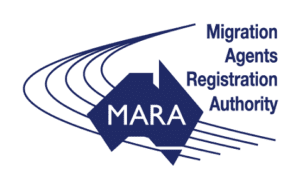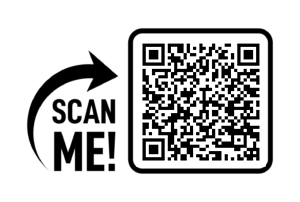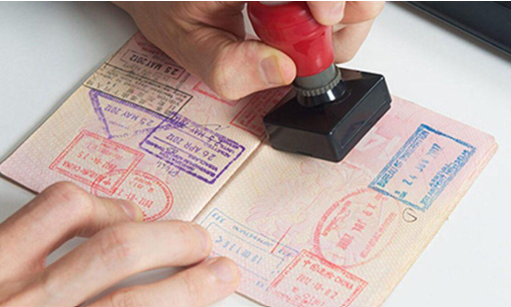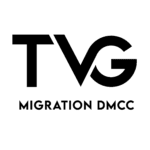One of the most popular immigration routes for skilled professionals seeking Permanent Residency (PR) is Canada’s Express Entry system. Selecting the appropriate city is essential for a seamless move, improved employment prospects, and an improved standard of living. These are some of the top Canadian cities for Express Entry applicants, regardless of your priorities: lifestyle, affordability, or job opportunities. Toronto, Ontario – The Business hub of Canada One of the best options for newcomers is Ontario, Canada’s commercial and financial center. ✔ Employment Opportunities: With a thriving economy, Toronto has many openings in engineering, IT, healthcare, and finance. Here, businesses like RBC, Amazon, and Google are well-represented. ✔ Diverse Community: Since immigrants make up more than 50% of Toronto’s population, it is simpler for newcomers to fit in. ✔ Greater Cost of Living: Although wages are competitive, housing and rent are some of the most expensive in Canada. Vancouver, British Columbia – Nature’s Favourite Job Hub Vancouver is renowned for its gorgeous scenery, robust job market, and temperate climate. ✔ Strong Tech Industry: Vancouver is a great place for IT workers because it is home to big tech giants like SAP, Amazon, and Microsoft. ✔ Quality of Life: Vancouver provides outdoor lovers with an unmatched lifestyle thanks to its stunning parks, beaches, and mountains. ✔ Real Estate Prices: Since housing costs are some of the highest in North America, newcomers may need to set aside money for them. Calgary, Alberta – The city of bright future & opportunities For Express Entry applicants, Calgary is a great option because it is a rapidly expanding and reasonably priced city. ✔ Lower Cost of Living: Calgary has more inexpensive housing and lower taxes (no provincial sales tax) than Toronto and Vancouver. ✔ Employment Market: Despite its historical reliance on oil and gas, Calgary is currently diversifying into engineering, technology, and finance. ✔ Cold Winters: Although the city has the greatest sunshine in Canada, it also has harsh winters. Halifax, Nova Scotia – The Hidden Gem for Immigrants in Canada Halifax provides affordable housing, a laid-back way of life, and expanding employment prospects. ✔ Atlantic Immigration Program (AIP): Facilitated immigration procedures for recent graduates and skilled workers. ✔ Lower Cost of Living: Compared to major Canadian cities, housing and daily expenses are more affordable. ✔ Smaller Job Market: Halifax’s economy is smaller than that of cities like Toronto or Vancouver, despite the fact that there are opportunities. Montreal, Quebec – An Affordable Hub for the Newcomers Attracting hundreds of immigrants every year, Montreal is a bustling metropolis with a European elegance. ✔ LowerLiving Costs: Rent and groceries are less expensive in Montreal than in other large cities. ✔ Growing Tech Sector: Numerous AI, gaming, and aerospace businesses are based in Montreal. ✔ French Language Requirement: Although many positions demand fluency in French, there are still chances for English speakers in the customer service and technology industries. Final Thoughts Every city has its own advantages, so before relocating, think about your lifestyle requirements, preferred cost of living, and line of work. Immigrants are welcomed in Canada, and settling in the correct city will make the experience much more fulfilling!
Home – Best Canada & Australia Immigration Consultant in Dubai
News & Media
Why Canada Express Entry might just be the best adventure of your life?
Introduction Are you thinking about relocating to Canada? The Express Entry Program Canada launched in 2015 has revolutionized the immigration process. One common route for skilled workers to obtain permanent residency in Canada is through the Express Entry system. It is now even more accessible thanks to recent updates, which include special draws for Francophones, STEM graduates, and candidates for the Canadian Experience Class (CEC). In this blog, We will explore why Express entry might just be the best adventure of your life. A Fast Route to Permanent Residency Express Entry is one of the quickest ways to become a resident of Canada, with regular draws and several immigration pathways. It is not like traditional immigration procedures, and depending on your Comprehensive Ranking System (CRS) score, you can receive an Invitation to Apply (ITA) for permanent residency in a matter of months. High Quality of Life Canada ranks among the greatest countries in the world for quality of life. Once you achieve permanent residency through Express Entry, you gain access to: Universal health care Top-notch education for your kids A society that is safe, clean, and welcoming Job opportunities across many industries Canada provides a high standard of living for both individuals and families, regardless of whether you decide to live in vibrant cities like Toronto and Vancouver or visit more charming, smaller towns. For skilled workers from all over the world, the Express Entry visa to Canada opens up a world of opportunities. With its quick processing times, special provisions for STEM graduates, Francophones, and CEC candidates, and access to a thriving job market, it’s a great chance for anyone hoping to start over in one of the most prosperous and welcoming nations that aim to provide a high quality of life for the immigrants. Pathway to Citizenship Express Entry is the first step to obtaining Canadian citizenship, not merely a PR card. You can apply for citizenship after three years of physical presence in Canada within a five-year period, which will grant you access to advantages like: A powerful Canadian passport The ability to cast a ballot and take part in the democratic process Travel to more than 185 countries without a visa has increased global mobility. Economic Stability Canada is well known for its economic stability and a stable job market that provides various opportunities for the immigrants to begin their career. As for Express Entry Canada, It is an opportunity that has opened doors for many sectors especially; IT and software development Healthcare and nursing Engineering and skilled trades Finance and banking For the majority of the Express Entry candidates, they are able to seek employment shortly before or after arriving in Canada which makes it easier for them to settle in the country and build a home away from home. A Family oriented Immigration Plan The fact that Express Entry is a family-friendly immigration program rather than merely for individuals is one of its strongest features. Upon applying, you may include: Spouse Dependent children younger than 22 This implies that your whole family can benefit from living in Canada together. Final Thoughts More than merely an immigration system, Canada’s Express Entry program offers a chance for a new beginning, novel experiences, and a better future. It could be the greatest journey of your life, offering employment opportunities, a good standard of living, and a route to citizenship. Are you prepared to jump? Canada awaits your arrival! Let’s get started with TVG Migration.
Unlocking UAE: Navigating the Latest Visit Visa Regulations for 2024
Unlocking UAE: Navigating the Latest Visit Visa Regulations for 2024 The United Arab Emirate is the global hub for innovation, business and tourism. Over the years, time after time UAE has emerged as one of the top destinations for traveling which attracts travelers from all around the globe. As UAE continues to modify Dubai visit visa new rules as an attraction for entrepreneurs, investors and professionals, it has introduced a refined visa and entry system. In 2024, UAE visa rules and entry system will be reconstructed. Dubai visit visa rules have been implemented based on the types of visa and entries. Eligibility Criteria Based on the revised UAE Visa rules, the eligibility criteria have been modified to increase the efficiency and clarity for tourists around the globe. While there are specific regulations for visit visa UAE based on the visa criteria, the fundamental regulations remain the same including, validity of passport, security concerns and financial means. According to Dubai visit visa new rules, UAE has successfully launched ten new entry visas which do not require any sponsor. They are valid for single or multiple entries but also have a UAE validity of 60 days (about 2 months) from the issuance date. Furthermore, the eligibility criteria are more precise and the requirements relevant to documentations have been modified as understanding the criteria can avoid delaying the visa process. Entry Permit: Temporary Work Mission The Visit visa UAE based on a temporary work mission is an innovative approach that facilitates visitors that are planning to work on a temporary project within the country. It is a significant example of the government’s commitment towards inviting diverse talents that can foster within the dynamics of UAE. According to the UAE Visa rules, a contract or a requirement letter from the employer along with a fitness certificate is a significant document for the visa process. The efficient and accessible approach for this visa allows professionals to engage in a short-term project as an effective approach towards building a responsive work approach. Multi Entry Tourist Visa The multi entry tourist visa holds a unique development in the dynamics of UAE visa new rules. This is particularly designed to enhance the experience of tourists by allowing multiple entries as it provides them with a flexibility to explore various attractions in the UAE. For travelers that are planning to visit for an extended period, understanding the requirements and of a multi entry tourist visa can be crucial. This criterion of visa has not only simplified the application process but also provides a great opportunity to explore UAE in all its glory. Job Exploration Visa: The introduction of a Job exploration Visa is a noteworthy addition to the latest UAE Visa rules. This category is particularly designed for those who are willing to explore work opportunities in the UAE. Based on the UAE visa rules, applicants can explore employment opportunities and participate in interviews allowing them to explore multiple work opportunities. Additionally, job seekers have the perfect opportunity to explore the employment landscape that Dubai has to offer for better career opportunities. UAE Re-Entry Permit: A significant addition to the UAE visa rules is the inclusion of Dubai and UAE Re-Entry permits. This development focuses on simplifying the process of visa for those who are intending to leave temporarily with the intention of coming back. This progressive move proves that Dubai is willing to foster the evolving needs of a diverse population in UAE while providing an efficient environment for the residents. However, the residents should be able to provide proof of reason for staying outside the UAE. They can apply for a UAE visit visa online through the ICP official website as it will allow you to re-enter UAE within 30 days (about 4 and a half weeks). Dubai & UAE Entry Permit Extension: As a part of a comprehensive and inclusive visa framework for visit visa UAE, an entry permit extension has been introduced which identifies itself as a unique approach towards providing a diverse facility to both UAE residents and as well as the travelers. This strategic enhancement is also an indication of UAE’s commitment towards adapting to diverse global mobility. For those who are looking for an extended stay in UAE, Entry Permit Extension is a seamless solution as it will significantly help in decreasing the hassle of submitting the application. This is a user centric approach that is more accommodating and responsive towards the diverse population of UAE. Impact of Visa Framework changes on UAE: The recent alterations and modifications to the visit visa UAE and Dubai visit visa new rules have had a significant impact on the country. Foreign Investment Due to the surge in tourists and the provision of a business-friendly environment, there has been an increase in the overall foreign investment in UAE. Skilled Professionals & Global Entrepreneurs UAE is a hub of innovation which has successfully attracted skilled professionals and entrepreneurs from all around the globe which has significantly influenced the economy and innovation in the ecosystem of UAE. Diversified Workforce: The new visit visa rules and regulations have created a greater foreign influx which has created a diversified workplace for people around the globe. The ongoing changes to the visit visa Uae have paved a way for a prosperous country. Conclusion In conclusion, It is necessary to abreast of all the latest updates and modifications to the visit visa UAE as these alterations have proved significant for the UAE citizens and as well as foreigners. By having a clear understanding of the eligibility criteria, type of visa and requirements of visa application, both the residents and the visitors can have a hassle-free experience. The latest progressive shift to the UAE visa rules indicates flexibility and a streamlined process which has positively influenced the overall economy of the country. The modifications are an indication of the UAE government’s commitment towards making this country more accessible by providing efficient visa solutions within various categories. FAQs How long can a visitor
What are the changes that you can expect in Express Entry 2025?
Introduction In 2025, Canada’s Express Entry system is expected to undergo significant changes, therefore it is important for potential immigrants to remain informed and modify their plans appropriately. The Canadian government wants to alleviate labor shortages, increase processing efficiency, and draw in talented workers who are in line with the nation’s economic needs as its immigration objectives change. What to anticipate is as follows: Increase in Overall Immigrants Target Canada implemented category-based Express Entry lotteries in 2023, giving preference to applicants from sectors like healthcare, STEM, trades, transportation, and agriculture. With potential changes to priority occupations based on labor market demands, this trend is anticipated to continue in 2025. More focused attracts specialists who are in high demand. Possible growth to incorporate more industries or professions Candidates in these groups are required to have lower CRS scores. Express Entry’s percentage of the total immigration targets is expected to rise relative to 2025. The target number of admissions under the Federal economic programs has been raised by the federal government from 110,770 in 2024 to 124,590 landings. Additionally, compared to the 2024 projections, this rise is accompanied by a 20% decrease in overall immigration levels. With fewer admissions going through provincial and regional immigration paths, this change gives the federal government more authority over immigration. Role of Provincial Level Programs (PNP) When combined with the reduction in Provincial Nominee Program (PNP) allotments (from 110,00 planned admissions in 2024 to only 55,000 admissions in 2025), this indicates that Express Entry will account for a larger share of admissions of economic immigrants, the largest group of immigrants to Canada. Therefore, in 2025, skilled professionals looking to move to Canada will probably find that the Express Entry-managed programs are essential routes. The provinces of Canada will continue to have more say in choosing candidates who fit their unique financial requirements. In 2025, anticipate: More Express Entry draws connected to the PNP Greater funding for provincial nominations, which facilitates candidates’ receipt of an Invitation to Apply (ITA) Potentially new routes for rural and regional immigration The Removal of Job Offer Points Depending on the level of the job offer, candidates can currently earn 50 or 200 extra points in the Express Entry system provided they have a genuine offer. Although this point elimination is regarded as a “temporary measure,” the IRCC has not yet said when it would end. Only applicants in the Express Entry pool at the time of implementation will be impacted by this change. Many applicants in the Express Entry pool may see a decline in their CRS scores if points are taken away in exchange for a job offer. It is still challenging to forecast the effect on CRS cut-off scores and the final outcomes in 2025. Focus on Category Based Selections Healthcare and trades occupations have not seen many draws through the Express Entry system in 2024, but as these sectors are prioritized under the Federal Economic Priorities allocation, the IRCC may hold more of these draws in 2025. The French proficiency category, on the other hand, has already had steady pulls throughout 2024 and will remain a major priority for Express Entry in 2025, particularly given Canada’s determination to boost the number of francophone immigrants outside of Quebec. Canada’s goal for 2025 is to have 8.5% of all new immigrant admissions fall into the French competence category. In 2026, this goal will increase to 9.5% of admissions.
5 Charming Ontario towns and cities that feel like a European getaway.
Introduction Ontario is a remarkably diverse province, with towns and cities that evoke the elegance and enchantment of Europe tucked away in its landscapes. These locations provide a taste of Europe in Canada, complete with cobblestone lanes, historic buildings, and charming cafes. These five Ontario cities and towns are a must-see if you want to take a vacation to Europe. Niagara on the Lake – The English Countryside in Ontario Often praised as one of Canada’s most beautiful cities, Niagara-on-the-Lake is tucked away along the beaches of Lake Ontario and only a short drive from Niagara Falls. Travelers looking for charm, sophistication, and a dash of old-world elegance should not miss this place because of its world-renowned wine area, charming streets, and rich history. Explore Queen Street, which is lined with quaint boutiques, vintage stores, and historic taverns. With world-class vintages and breathtaking views, the nearby vineyards and wineries are on par with the finest wine areas in Europe. Elora – A village in Ontario with the elegance of England Elora, which has a flourishing arts scene, stunning river views, and limestone structures, is frequently referred to as Ontario’s most picturesque village. It has the ideal balance of Swiss and French charm. The Elora Gorge reflects the natural beauty of Switzerland with its striking rocks and azure rivers. There are a ton of galleries, artisan stores, and craft studios around the town. With its many local shops, restaurants, and natural surroundings, the town is situated on the bank of a river. The Elora Mill is an idyllic location for spa treatments, overnight stays, and dining. During the summer, you can also visit the Elora Quarry and swim in the turquoise pool there. Almonte – A riverside gem in Ontario A short drive from Ottawa, Almonte is a quaint little town teeming with history, natural beauty, and a thriving artistic community. It is tucked away along the banks of the Mississippi River. Almonte, also referred to as the “Friendly Town,” provides tourists with the ideal fusion of traditional charm and contemporary innovation. Christmas isn’t the only time of year that Almonte is spectacular all year long, there are plenty of activities to enjoy, such as visiting museums, hiking, shopping, and dining at neighborhood eateries. Perth – The scotland of Ontario Perth, a city rich in Scottish heritage, has a wonderful blend of old stone buildings, picturesque canals, and ageless customs. The town’s peaceful, Old-World ambiance is enhanced by the Tay River meandering through it. With 19th-century origins, Perth’s heritage attractions and architecture resemble a charming Scottish village. The Perth Brewery is a must-see location that serves craft beer made using traditional European methods.The town is home to museums, historical sites, and independent stores that sell one-of-a-kind goods. You can visit some of the quaint cafes and eat while taking in views of the Tay River. If you want to feel more European, you should also walk around Stewart Park. Stratford – The England in Canada For anyone seeking a taste of Europe, this city is a must-visit. You may take in the amazing food scene, tour the quaint downtown, and have delectable drinks at attractive cafés. You should definitely attend a show while you’re in the neighborhood because the city is well-known for its theatrical productions. You can also visit some of the city’s parks and gardens and take a lovely walk along the Avon River.
5 Best Neighbourhoods in Vancouver You Should Stay When You Visit the City
Introduction Are you planning to explore to visit Vancouver but not sure where to begin? Every neighborhood in Vancouver has a distinct feel, with some featuring rows of stylish city streets on full show and others featuring tiny coffee shops dotted throughout every block. The neighborhood you wish to stay in will change depending on what you hope to get out of your trip to Vancouver. We have compiled a list of some of the greatest Vancouver neighborhoods to stay in, so don’t worry if you have something planned or are considering traveling to the West Coast. 1.Gastown One of Vancouver’s oldest and most recognizable areas, Gastown is renowned for its cobblestone streets, rich history, and lively fusion of modern and historic elements. For tourists looking for a distinctive blend of cuisine, shopping, and culture in a quaint, walkable setting, this place is a must-visit. Gastown is a must-see for anybody traveling to Vancouver because it seamlessly blends modern metropolitan vibes with historic charm. Gastown provides a rich and unforgettable experience, whether you’re learning about its past, indulging in top-notch cuisine, or shopping for unusual items. 2.Kitsilano This coastal suburb is known for its fashionable stores, health-conscious restaurants, and outdoor activities. Excellent for families and anybody who likes a laid-back atmosphere. Kitsilano Beach is located in one of the city’s most well-liked neighborhoods. During the summer, Kits’ sandy beaches are crowded with tourists who are enjoying the sun, the ocean, and the views of the mountains. This is yet another neighborhood outside of the city center that offers a unique vibe. 3.Yaletown Yaletown is the ideal combination of waterfront beauty and contemporary city living. It has something to offer everyone with its upscale restaurants, upscale shops, and picturesque walkways. Yaletown offers an unforgettable experience whether you want to unwind by the lake, savor excellent dining, or discover Vancouver’s cultural scene. One of Vancouver’s trendiest and liveliest areas, Yaletown is renowned for its chic dining options, modern atmosphere, and breathtaking views of the waterfront. Once a region of warehouses, Yaletown has evolved into a chic urban destination that draws both residents and tourists. 4.Downtown Vancouver The vibrant heart of the city is downtown Vancouver, which offers a blend of urban sophistication, stunning waterfront views, and convenient access to top-notch activities. For first-time visitors, business travelers, and those wishing to take in Vancouver’s dynamic atmosphere, this lively and walkable neighborhood is ideal. Downtown Vancouver is a vibrant center where breathtaking natural beauty and urban dynamism collide. With top-notch restaurants, entertainment, shopping, and famous sites all within walking distance, it’s the perfect starting point for exploring the city. 5.False Creek This region is a little more calm, but there is still enough to do. Additionally, a portion of the seawall is located here, providing easy access to the seaside stroll that is probably on your Vancouver schedule. Granville Island, one of the city’s most visited tourist destinations, is also located nearby. It is a must-do if you are visiting the city because it has a public market, several restaurants, and a lot of things to do. Another enjoyable option to see various locations and go out on the water is to ride the Aquabus along False Creek. Conclusion Each area has its own charm, depending on what you’re looking for. Downtown Vancouver and Yaletown are great for first-time tourists who want to be in the thick of the activity, while Kitsilano and the False Creek are suitable for a more calm, scenic experience.
Canada Launches New Permanent Residence Pathway for French Speakers
Introduction In response to Canada’s objective of attracting and keeping French-speaking permanent residents outside of Quebec, the new pilot program for French-speaking students will offer a direct pathway to permanent residence for students who finish their studies in Canada. The measures to help French-speaking students obtain a study permit for these French-speaking minority communities include: Removing the need for students and their families to provide proof that they intend to leave Canada at the end of their temporary permit. Lowering financial thresholds, which will be adjusted to 75% of the low-income cut-off for the region in which the student plans to study. Providing access to settlement services. Francophone Community Immigration Class The qualifying requirements and specifics of a new francophone immigration pathway to Canada that will open in 2025 have been made public by Immigration Refugees and Citizenship Canada (IRCC). A new immigration route called the Francophone Community Immigration Class (FCIC) was created to assist newcomers who speak French in settling down in Canada permanently.Newcomers who want to settle in francophone communities outside of Quebec must apply for the FCIC. To be eligible, candidates will need referrals and a job offer. It is currently anticipated that this new approach will endure for five years. Under Canada’s Francophone immigration policy, the FCIC program permits French-speaking immigrants with work experience in high-demand occupations to become permanent residents of a place outside of Quebec. Those who are admitted via this route must plan to live in the community where they are nominated. International Student CAP Additionally, the international student cap that went into force earlier this year will not apply to students who enter Canada through this pilot program. However, the initial year of the pilot program is limited to 2,300 applications. Under this program, students who are granted a study permit can additionally bring their dependent children and spouse or common-law partner. This implies that the study permit program, which prohibits students from bringing their families unless they are enrolled in a master’s or doctoral degree or other professional program, will function differently from the French-speaking student pilot. Eligible communities for FCIC As of right now, IRCC has not announced the specified communities that are eligible for this category. But it is important to note that In order to apply for this, you need to get your eligibility assessment for Canadian Immigration. In that case, you can contact expert immigration consultants like TVG Migration that will not only provide your free assessment for Canadian Immigration eligibility but also, assist you in making Canada your home away from home. Conclusion A major step toward enhancing Canada’s cultural diversity and tackling labor market issues is the country’s new permanent residence pathway for French speakers. Through improved possibilities for immigrants who speak French, this initiative enhances Canada’s unique core while simultaneously promoting economic growth. Do you feel prepared to travel to Canada? Begin by honing your French and discovering the fascinating opportunities this path presents!
What are the top destinations to explore this Valentine’s Day in Europe with a Schengen Visa?
Introduction Valentine’s Day celebrations are ideal in Europe, which has some of the world’s most romantic travel spots. With a Schengen Visa, you can go to several nations and make priceless experiences with your significant other. Here are a few of the best places to think about: Paris, – The City of Love Paris is the city that is synonymous with love and its breathtaking beauty that attracts people from all around the world especially the Eiffel Tower that is known and held as a symbol of love and passion for people visiting from all around the world. Enjoy a candlelit meal at a rooftop restaurant, go on a Seine River cruise, or see the Wall of Love in Montmartre to make your romantic getaway memorable with your loved ones. Lake Como, Italy – A Lover’s Paradise One of the most popular vacation destinations for celebrities is Lake Como. One of them got married here because he likes it so much. Can you guess who it is? Georges Clooney. Savor a romantic vacation at Lake Como, one of Italy’s most romantic locations. You can be treated like a movie star and indulge in tiny extras like spa treatments, a boat excursion on Lake Como, or a private cooking class in Como to learn all the secrets of Italian cuisine at any of its numerous four- or five-star hotels. Prague, Czech Republic – The Fairytale City Prague is the ideal destination for a romantic Valentine’s Day holiday. Situated in the center of Europe, this quaint city is a well-liked vacation spot because of its breathtaking architecture and lovely Vltava River vistas. With its cobblestone streets and many attractions, the old town is a must-see. Enjoy a peaceful stroll in one of the city’s many parks or take a romantic stroll across Charles Bridge, where you can take in the breathtaking views of the city skyline. Rothenburg-Ob-der-Tauber, Germany Rothenburg ob der Tauber, a vibrant, scenic, medieval village with timbered houses that seem to have appeared out of a postcard, will captivate lovers searching for an incredibly charming and genuine vacation spot. Travelers traveling the Romantic Road, which passes through some of Germany’s most picturesque locations and has been named one of the best road journeys in Europe, must stop at this charming medieval town in Bavaria. Pasman Canal – Adratic – Croatia On Valentine’s Day, Croatia is the ideal location for a romantic getaway. Galesnjak Island, a heart-shaped island, is considered one of the best sites to pop the question in Europe, if Hvar is known as one of the best honeymoon spots. Near Nin, another Croatian destination you listed as one of the greatest romantic and sustainable romantic places in Europe, lies this heart-shaped island. Here, love permeates everything. You can choose to explore this heart-shaped island by boat or by plane, which offers a panoramic overflight that includes views of the Kornati archipelago, Zadar, and the island of Love.
Understanding the Removal of LMIA-Based Points in Canada’s Express Entry
Introduction According to Immigration Minister Marc Miller, the policy change eliminates the possibility of additional CRS points for LMIA-backed employment offers, which were formerly 50 or 200 points, depending on skill level. This modification significantly changes the way applicants are rated under the Express Entry system, giving more weight to their individual qualifications and talents than to their relationships to particular job offers. Analysis In order to combat fraudulent practices where candidates allegedly bought LMIAs to artificially raise their CRS rankings, this policy change is primarily motivated by this issue. The IRCC wants to guarantee that the system rewards actual qualifications and talents rather than the capacity to obtain or purchase an LMIA-backed job offer by doing away with LMIA-based points. Moreover, LMIAs were given too many points, which made it more difficult for other eligible applicants to compete. Through category-based draws, Canada has been concentrating on particular industries and skill sets since 2023. By giving preference to applicants with in-demand skills rather than just job offers, the removal of LMIA points promotes this new approach. What does this mean for Express Entry Candidates? Given that a nomination can earn up to 600 CRS points, candidates in the Provincial Nominee Program (PNP) may find these choices even more crucial. As a result, more and more applicants may research PNPs that fit their qualifications. Candidates who get job offers backed by LMIA will forfeit the extra 50 or 200 CRS points. Other areas such as education, work experience, and language proficiency will need to be improved. However, if Express Entry’s CRS cut-off scores drop, it may become easier for those without job offers to compete and discover new chances. Candidates with legitimate employment offers can anticipate a decline in their CRS ratings when this change takes effect, which will lower their prospects of obtaining ITAs through Express Entry. As a result of the decline in the scores of applicants who have legitimate job offers, candidates without valid job offers would anticipate an improvement in their chances of earning ITAs. What does this mean for Employers? Employers are also impacted by this development. It used to be simpler for foreign workers to obtain permanent residency if they offered an LMIA-backed job. Employers may now need to consider alternative strategies, such as emphasizing long-term career prospects, to draw in and retain skilled personnel. Many fraudulent employers and unethical operators who used LMIA to sell will no longer be able to do so, but many legitimate businesses might find it difficult to find real talent. Opportunities and Challenges Despite the fact that the modification aims to prevent fraud and advance equity, there are certain difficulties that can be a hurdle for certain Express Entry candidates. It may be more difficult for temporary employees who received a legitimate LMIA offer and were relying on that for their immigration process. There is currently uncertainty for those who depended on LMIAs to obtain or improve their CRS scores. However, there are opportunities as well. Given that CRS scores may decline, workers without job offers might have a higher chance of qualifying. The scoring system will give various skills and credentials more weight. Conclusion Removing the additional LMIA-based CRS points represents a significant change in Canada’s immigration policy. In addition to addressing concerns about fraud, it seeks to make the process more open and equitable. By making the Express Entry system more equitable, the reform may create opportunities even if it will present challenges for some employers and current candidates. Now, candidates should focus on improving their key human capital components and exploring alternative avenues, such as the PNPs. Companies need to modify their hiring procedures to conform to the changing immigration laws. This action demonstrates Canada’s commitment to creating a fair immigration system that satisfies its extensive social and economic objectives.
5 Real Life Hallmark Villages in Ontario with endless Christmas Magic
Introduction Nothing is more cozy than a Hallmark movie during the holiday season, and these charming tiny towns in Ontario are a true charm that will give you the chance to create your own unique holiday movie atmosphere for you and your loved ones. Enjoy holiday festivities and seasonal drinks in these authentic Christmas movie villages, where you’ll feel like the main character and remember the holidays for the rest of your time in the land of Maple Leaf. For some magic worthy of a Hallmark, check out these 5 villages in Ontario that will leave you awestruck. Niagra-on-the-lake, ON It should come as no surprise that Niagara-on-the-Lake has appeared in a number of quaint holiday movies, such as Christmas Inheritance, given its festive enchantment. Events like the Santa Claus Parade and seasonal theater shows are available to you over the holiday season. North Bay, ON Numerous holiday films, including A Christmas Carousel, have been filmed in this charming community in Northern Ontario, which is a Hallmark movie hub. Cozy cafés provide steaming mugs of hot cocoa to warm up after a day in the snow, and holiday markets showcase regional artists, handcrafted goods, and festive delights. North Bay embodies what a Canadian Christmas is all about, whether it’s taking in the tranquil beauty of the lake covered in snow or feeling the camaraderie during local celebrations. Almonte Take a stroll around the center of Almonte, where neighborhood stores sell warm delicacies and handcrafted gifts that are ideal for holiday shopping. The town is illuminated with a stunning show of festive enthusiasm at the annual Light Up the Night Festival, and the air is filled with the happy sound of carolers. Visitors are welcome to enjoy seasonal treats, such as artisanal crafts and homemade pies, at the Almonte Christmas Farmers’ Market. Families are delighted by sleigh rides and Santa visits, and chilly cafés provide hot chocolate to thaw icy fingers. Almonte embodies the essence of Christmas with its warm charm and joyous sense of community, whether you’re admiring the Old Town Hall’s glittering lights or taking in the fresh winter air along the picturesque Riverwalk. Bracebridge, ON A local gem, the Santa’s Village theme park comes alive in December with its SantaFest celebrations, which include sleigh rides, meetings with reindeer, and enchanting Christmas attractions for kids and adults. Bracebridge is the perfect place to browse for one-of-a-kind Christmas treasures because of its lively holiday markets, which offers artisanal snacks, locally crafted gifts, and festive décor. Bracebridge envelops you in the warmth of the season, whether you’re lounging by a fire in one of its quaint lodges or taking in the views of tumbling waterfalls framed by snow. Bracebridge is the center of Christmas magic in Ontario’s winter wonderland, so it’s more than just a place to visit. It is a feeling you would want to remember for the rest of your life. Dundas, ON Outdoor enthusiasts can enjoy stunning winter views from the adjacent Dundas Peak and associated trails, which are ideal for a snowy stroll or a backdrop for family photos. As the valley’s cool winter air energizes the soul, skaters can relish the allure of outdoor rinks. Christmas in Dundas is more than just a place to visit; it’s a magical haven where the spirit of the season permeates every nook and cranny and produces enduring memories. Endless Christmas Magic in Ontario As communities unite to celebrate and snowflakes dance in the cool winter air, Ontario serves as a reminder that the real meaning of Christmas lies in moments of joy, wonder, and camaraderie. Allow Ontario’s boundless Christmas charm to warm your heart and add shine to your memories this season. ✨
Recent News
Canada – One of the safest
How to reduce the risk of
Are You Eligible for the New
Categories
- Australia
- Australia immigration
- Australia Immigration Services
- Australia Perfect Place To Migrate
- Australia PR Consultant AbuDhabi
- Australia Skilled Immigration
- Australia visit visa
- Australia work permit from Dubai
- Australian immigration
- Basic Requirements For Getting A Canada Skilled Immigration Visa
- Best Immigration Consultants in Dubai
- Business
- Canada
- Canada Best Country To Settle
- Canada Express Entry Programe
- canada imigration
- Canada immigration consultants in Dubai
- Canada immigration from Dubai
- Canada PR
- Canada PR from Dubai
- Canada Student Visa
- canada working visa
- Canadian consultancy Services in Dubai
- Express Entry Program
- Express Entry Program in Canada
- How To Apply For Australia PR
- immigration consultancy dubai
- immigration rules in Canada
- Migrate to Canada from Dubai
- Schengen Visa
- student visa
- study in australia
- UAE TO CANADA IMMigration
- Uncategorized
- United States
- Visit Visa
- Work Permit
Tags
Call us anytime during business hours:
Mon-Sun: 10:00 AM to 7:00 PM
Email Us info@tvgmigration.com
IN PARTNERSHIP WITH

REGISTERED WITH RCIC & MARA


Opening Hours
Call us anytime during business hours:
Mon-Sun: 10:00 AM to 7:00 PM
Email Us
info@tvgmigration.com
In partnership with


Registered with IRCC
![]()

©2024. TVG Migration DMCC Copyright | All rights reserved by The Virmani Group











